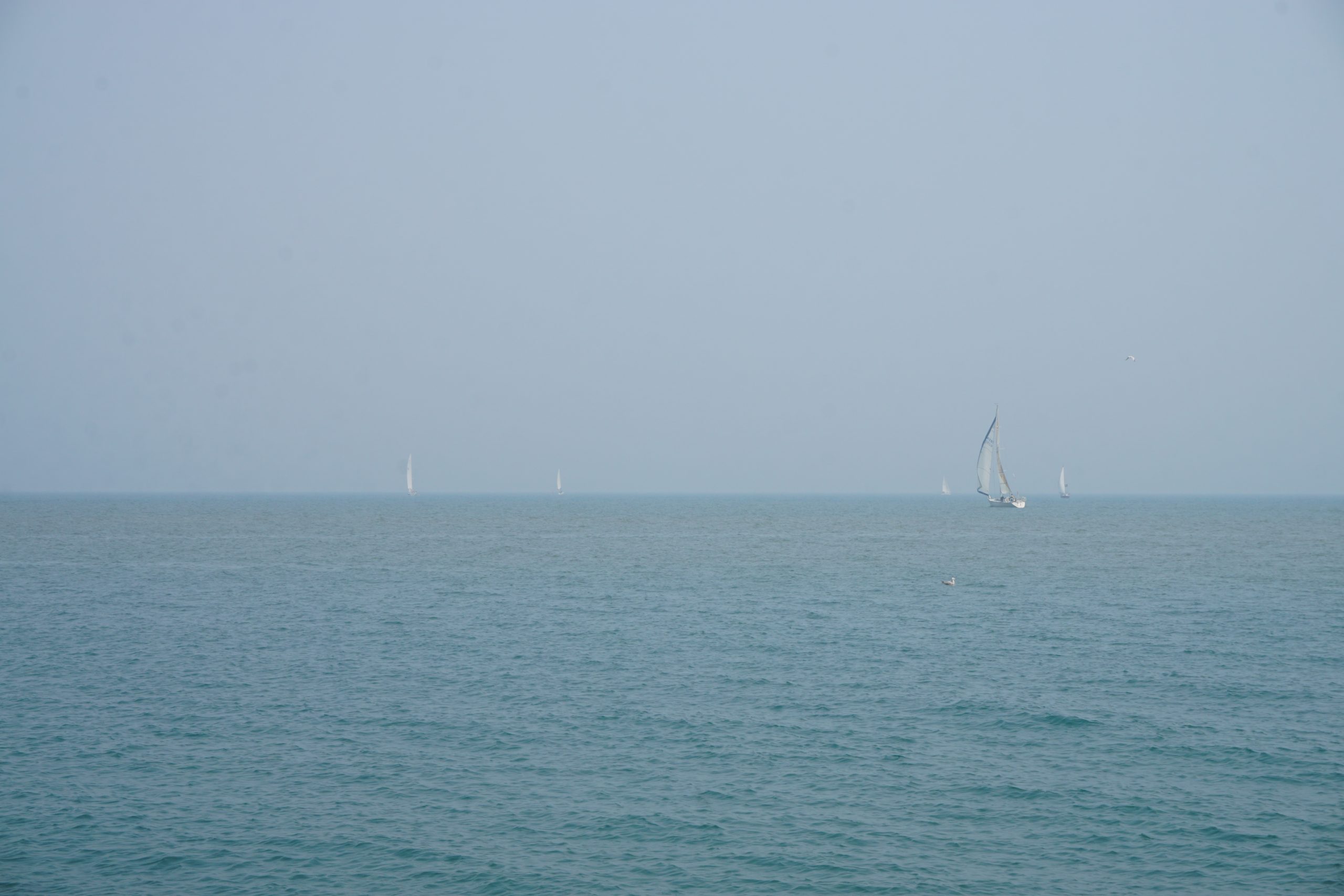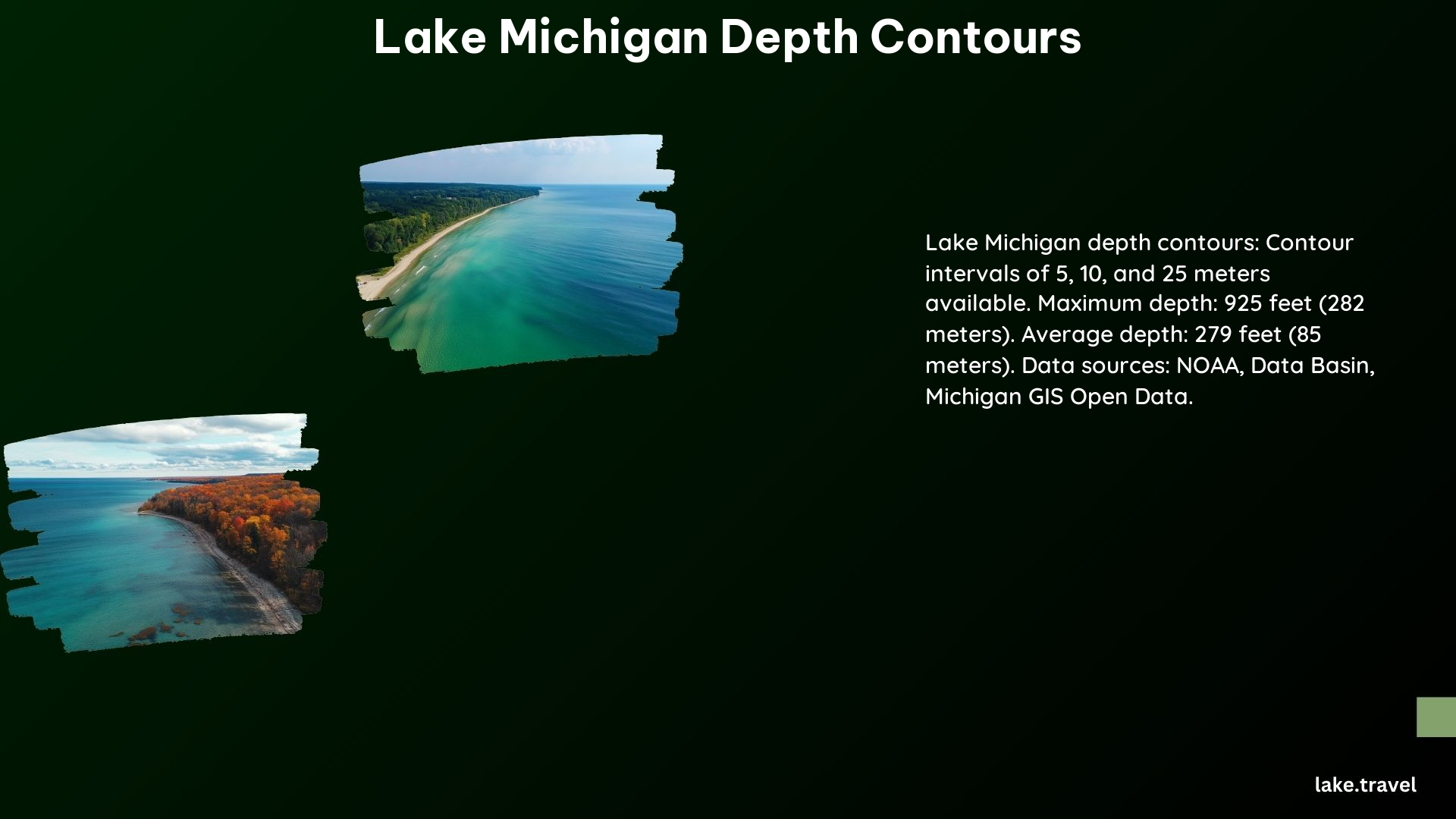Lake Michigan, one of the Great Lakes, is renowned for its vast expanse and captivating natural beauty. Beneath the surface, however, lies a complex and fascinating bathymetry that is crucial for understanding the lake’s ecosystem, navigation, and recreational activities. In this comprehensive guide, we will delve into the intricacies of Lake Michigan depth contours, providing you with the essential information you need to fully appreciate this remarkable body of water.
Understanding the Scale of Lake Michigan Depth Contours

The scale of the Lake Michigan depth contours can vary depending on the source and resolution of the data. The National Oceanic and Atmospheric Administration (NOAA) offers depth contour maps with intervals of 10 meters and 5 meters, while other sources, such as Data Basin, provide bathymetric contours with depths measured in meters. This variation in scale allows for a more detailed and nuanced understanding of the lake’s underwater topography.
Vertical Datum of Lake Michigan Depth Contours

The vertical datum used for Lake Michigan depth contours is typically based on the International Great Lakes Datum (IGLD) 1985. This standard reference is crucial for accurately measuring water levels and understanding the relative depths throughout the lake.
Formats of Lake Michigan Depth Contours Data
The format of the Lake Michigan depth contours data can take various forms, depending on the source. NOAA provides data in GIF, JPEG, and EPS formats, while Data Basin and Michigan GIS Open Data offer digital data formats suitable for analysis and mapping purposes.
Exploring the Bathymetry of Lake Michigan
The depth contours of Lake Michigan reveal a diverse and dynamic underwater landscape. From the shallow nearshore areas to the deeper central basin, the lake’s bathymetry is characterized by a range of features, including:
-
Nearshore Shallows: The areas closest to the shoreline are generally shallow, with depths typically less than 10 meters. These shallow regions are important for aquatic vegetation, fish spawning, and recreational activities.
-
Central Basin: The central basin of Lake Michigan is the deepest part of the lake, with depths reaching up to 281 meters (922 feet) in some areas. This deep basin is a crucial habitat for a variety of fish species and plays a significant role in the lake’s overall ecosystem.
-
Underwater Canyons and Ridges: The lake’s bathymetry is not uniform, with the presence of underwater canyons, ridges, and other topographic features that can influence water currents, sediment deposition, and the distribution of aquatic life.
-
Submerged Shipwrecks: Lake Michigan is home to numerous submerged shipwrecks, some of which are located in relatively shallow waters and can pose navigational hazards. The depth contours can help identify the locations of these historical and ecological sites.
Practical Applications of Lake Michigan Depth Contours
The detailed understanding of Lake Michigan’s depth contours has numerous practical applications, including:
-
Navigation: Boaters, sailors, and commercial vessels rely on accurate depth information to navigate the lake safely, avoid hazards, and plan their routes effectively.
-
Fisheries Management: Fisheries biologists and resource managers use depth contours to identify critical habitats, spawning grounds, and migration patterns of various fish species, which informs conservation and management strategies.
-
Recreational Activities: Anglers, divers, and other recreational users can utilize depth contours to locate prime fishing spots, explore submerged features, and plan their activities on the lake.
-
Environmental Monitoring: Researchers and environmental agencies use depth contours to study sediment transport, water circulation patterns, and the overall health of the lake’s ecosystem.
Conclusion
Lake Michigan’s depth contours are a valuable tool for understanding the complex and dynamic nature of this Great Lake. By exploring the scale, vertical datum, and data formats of these contours, we can gain a deeper appreciation for the lake’s underwater topography and its significance for navigation, resource management, and recreational pursuits. Whether you are a seasoned lake enthusiast or a curious explorer, understanding the depth contours of Lake Michigan will undoubtedly enhance your appreciation and enjoyment of this remarkable natural wonder.
References
- FisherMap. (n.d.). Lake Michigan Nautical Chart and Water Depth Map. Retrieved from https://usa.fishermap.org/depth-map/michigan-lake/
- ArcGIS. (n.d.). Lake Michigan Bathymetric Contours – Overview. Retrieved from https://www.arcgis.com/home/item.html?id=5b75b359e7614283aeca6c72d8e97e01
- NOAA. (n.d.). Images – Bathymetry of Lake Michigan. Retrieved from https://www.ngdc.noaa.gov/mgg/greatlakes/lakemich_cdrom/html/images.htm
- Data Basin. (n.d.). Lake Michigan Bathymetric Contours (Depth in Meters) – Data Basin. Retrieved from https://databasin.org/datasets/6a792bb6ebe641998f7641583992ccab/
- Michigan GIS Open Data. (n.d.). Lake Michigan Bathymetric Contours – Michigan GIS Open Data. Retrieved from https://gis-michigan.opendata.arcgis.com/datasets/269f5b90827b49c18a8b8629e2916130.
